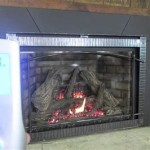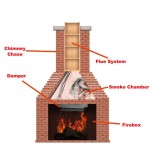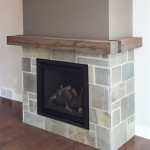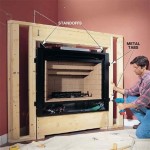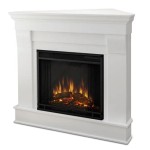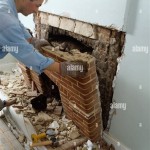Rustic Stone Fireplaces: A Timeless Aesthetic and Functional Hearth
Rustic stone fireplaces offer a captivating blend of natural beauty and functional warmth, making them a sought-after feature in both contemporary and traditional homes. Their enduring appeal stems from the inherent character of the stone, its ability to radiate heat efficiently, and the sense of connection to nature they evoke. This article will explore the various aspects of rustic stone fireplaces, from the selection of stone and design considerations to their installation and maintenance.
The term "rustic" in this context describes a style that emphasizes natural, unrefined materials and textures. It evokes images of rural landscapes and simpler times, offering a counterpoint to modern, polished aesthetics. A rustic stone fireplace, therefore, aims to capture this essence, bringing the raw beauty of natural stone into the interior of a dwelling.
Stone Selection: The Foundation of Rustic Appeal
The choice of stone is paramount in defining the character of a rustic fireplace. Different types of stone possess distinct colors, textures, and patterns, each contributing to a unique aesthetic. Common stone options include:
Fieldstone: This term generally refers to stones gathered from fields or riverbeds. Fieldstone typically has rounded edges and a variety of colors and sizes, creating a randomly textured and visually interesting surface. Its natural appearance lends itself well to rustic designs, often conveying a sense of age and authenticity.
River Rock: Similar to fieldstone, river rock is characterized by its smooth, rounded shape, sculpted by the constant flow of water. The colors can range from earthy browns and grays to vibrant reds and greens, depending on the geological composition of the area where the stones were sourced. River rock fireplaces often create a calming and organic atmosphere.
Ledgestone: This type of stone is characterized by its flat, elongated shape, resembling layered ledges. Ledgestone can be stacked to create a textured, linear appearance. The relatively uniform shape of ledgestone makes it easier to work with, allowing for more structured and contemporary rustic designs.
Flagstone: Similar to ledgestone in its form, flagstone are flat slabs of sedimentary rock. The individual pieces are typically larger than ledgestone adding a grander impression. Its varied colors and textures contributes to a unique aesthetic.
Limestone: A sedimentary rock formed from the accumulation of marine organisms, limestone offers a more refined appearance compared to fieldstone or river rock. Its relatively smooth texture and neutral colors, often ranging from cream to light gray, make it a versatile choice for rustic fireplaces. Limestone can be easily carved and shaped, allowing for intricate detailing and customized designs.
Granite: An igneous rock known for its durability and resistance to heat, granite is a suitable option for fireplaces. Its speckled appearance and wide range of colors, from light gray to deep black, offer visual interest. While granite is often associated with modern designs, it can be incorporated into rustic fireplaces by choosing a rough, unpolished finish.
The selection process should consider not only the aesthetic appeal of the stone but also its availability, cost, and suitability for the specific fireplace design. Consulting with a qualified stone mason or fireplace professional is highly recommended to ensure the proper selection and installation of the stone.
Design Considerations: Integrating Functionality and Aesthetics
The design of a rustic stone fireplace should carefully balance functionality and aesthetics. Factors to consider include:
Size and Proportion: The size of the fireplace should be proportionate to the room in which it is located. A fireplace that is too large can overwhelm the space, while one that is too small may appear insignificant. The height and width of the fireplace should also be carefully considered to create a balanced and visually pleasing composition.
Hearth Design: The hearth, the non-combustible area in front of the fireplace opening, is an important design element. It provides a safe zone to protect the flooring from sparks and embers and can also serve as a seating area. The hearth can be constructed from the same stone as the fireplace surround or from a contrasting material, such as brick or slate.
Mantel Design: The mantel, a shelf above the fireplace opening, is a focal point that can be used to display decorative items. Rustic mantels are often made from reclaimed wood or rough-hewn timbers, adding to the natural ambiance.
Firebox Design: The firebox, the chamber where the fire burns, must be designed to ensure efficient combustion and proper ventilation. The size and shape of the firebox will depend on the type of fuel being used and the desired heat output. It's crucial to adhere to local building codes and safety regulations when designing the firebox.
Chimney Design: The chimney is responsible for venting smoke and gases from the firebox. The height and diameter of the chimney must be properly calculated to ensure adequate draft. A properly functioning chimney is essential for safe and efficient operation of the fireplace.
Room placement: The fireplace location within the room matters in terms of heat distribution and focal point creation. Typically the central location is the best for even warming and drawing the eyes of the viewers.
The overall design should reflect the homeowner's personal style and complement the existing architecture of the home. Inspiration can be drawn from various sources, including magazines, websites, and visits to homes with rustic stone fireplaces.
Installation and Maintenance: Ensuring Longevity and Safety
The installation of a rustic stone fireplace is a complex process that requires specialized skills and knowledge. It is highly recommended to hire a qualified stone mason or fireplace professional to ensure proper installation and adherence to safety regulations. The installation process typically involves the following steps:
Foundation Preparation: A solid and level foundation is essential for supporting the weight of the stone fireplace. The foundation may need to be reinforced to accommodate the additional load.
Firebox Construction: The firebox is constructed using fire-resistant materials, such as firebrick or cast iron. The firebox must be properly insulated to prevent heat transfer to surrounding walls.
Stone Veneer Installation: The stone veneer is applied to the firebox and surrounding structure using mortar. The stones are carefully arranged to create the desired aesthetic effect.
Chimney Installation: The chimney is connected to the firebox and extended above the roofline. The chimney must be properly sealed to prevent leaks and ensure proper draft.
Finishing Touches: The fireplace is finished with details such as the hearth, mantel, and any decorative elements.
Once installed, a rustic stone fireplace requires regular maintenance to ensure its longevity and safe operation. This includes:
Regular Cleaning: The fireplace should be cleaned regularly to remove soot and ash buildup. A wire brush can be used to clean the firebox, and a vacuum cleaner can be used to remove ash from the hearth.
Chimney Inspection: The chimney should be inspected annually by a qualified chimney sweep to ensure it is free of obstructions and in good condition. Chimney sweeps can also identify and repair any potential problems, such as cracks or leaks.
Firebox Inspection: The firebox should be inspected regularly for cracks or damage. Any necessary repairs should be made promptly to prevent further deterioration.
Proper Fuel Storage: Wood fuel should be stored in a dry, well-ventilated area to prevent mold and insect infestation.
Fire Safety Practices: Fire safety practices should always be followed when operating a fireplace. This includes never leaving a fire unattended and ensuring that the area around the fireplace is clear of flammable materials.
By following these installation and maintenance guidelines, homeowners can enjoy the beauty and warmth of a rustic stone fireplace for many years to come.
In conclusion, rustic stone fireplaces offer a timeless and functional addition to any home. Their natural beauty, efficient heat output, and enduring appeal make them a popular choice for those seeking to create a warm and inviting atmosphere. By carefully considering the selection of stone, design considerations, and installation process, homeowners can create a rustic stone fireplace that will be enjoyed for generations. Proper maintenance is crucial for ensuring the safety and longevity of the fireplace, and it is recommended to consult with qualified professionals for installation and maintenance services.

65 Best Stone Fireplace Design Ideas To Ignite Your Decor Designs Home Farmhouse

50 Sensational Stone Fireplaces To Warm Your Senses

20 Rustic Stone Fireplace Ideas For Design Inspiration Field Mag

Rustic Stone Fireplace Living Room San Diego By Eldorado Houzz

12 Rustic Stone Fireplace Ideas

The Rustic Stone Fireplace Amazing Adirondack Designs

Featured Project Rustic Stone Fireplace Custom Outdoor Kitchen

50 Sensational Stone Fireplaces To Warm Your Senses

Fireplaces Eldorado Stone

50 Sensational Stone Fireplaces To Warm Your Senses
Related Posts

